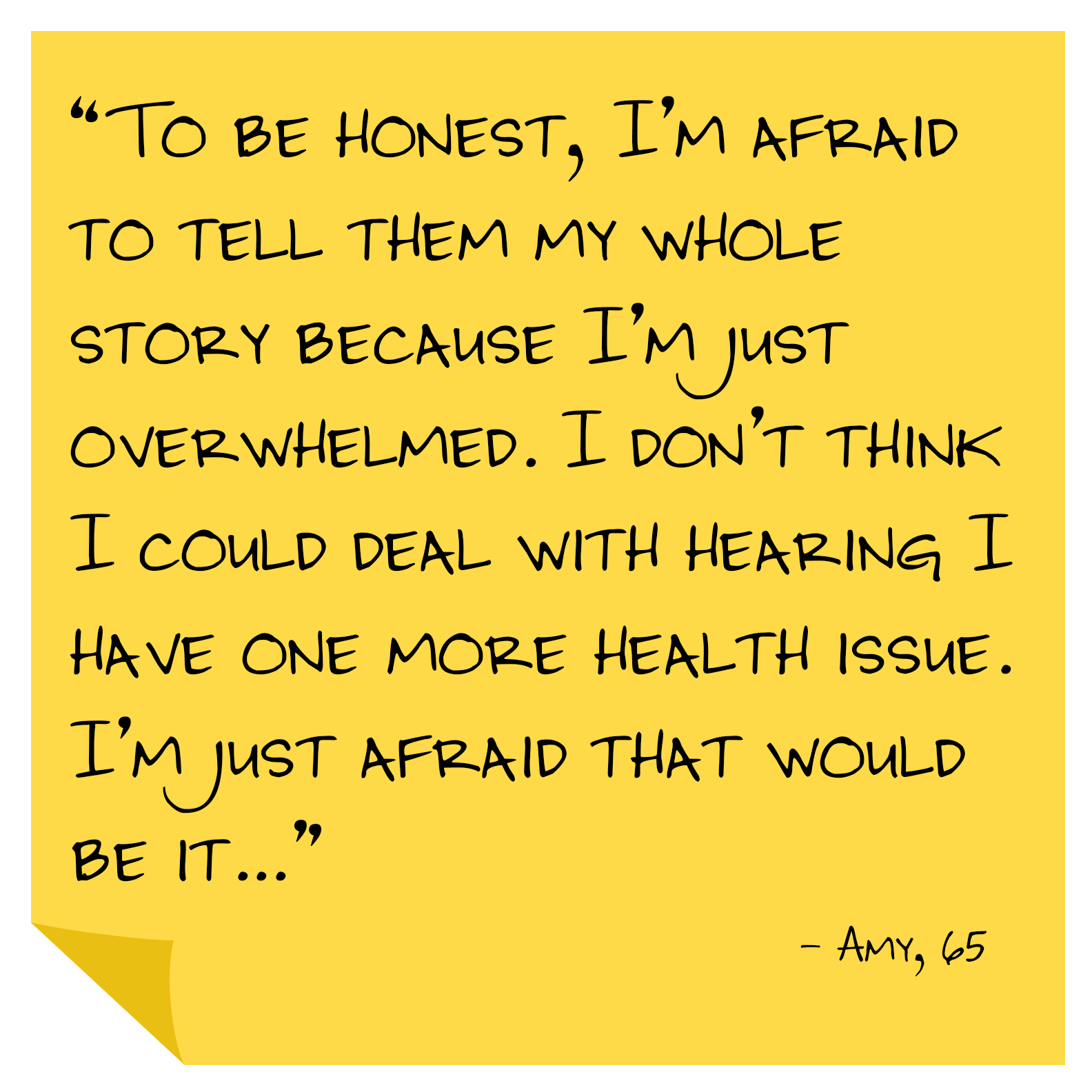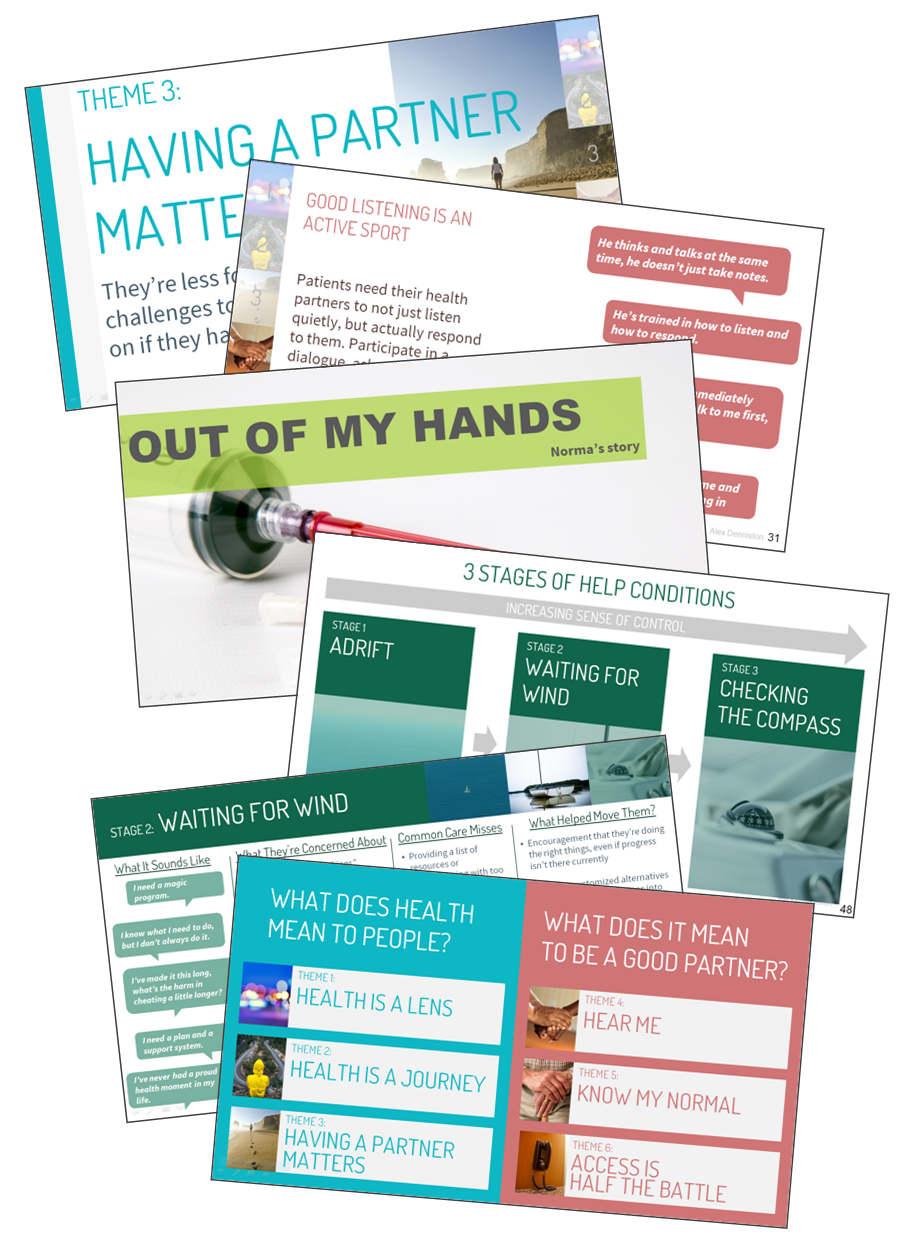THE QUESTION
How can a local healthcare provider
better partner with its >65 year old patient base?
THE PROJECT
Martin’s Point offers primary healthcare services as well as Medicare supplemental coverage to patients over 65 years old. In their continued quest to improve the quality of their services and patient outcomes, they wanted to better understand this population. We spent over an hour each with 10 patients to simply learn about their needs and perception of how Martin’s Point could better serve them.
THE FINDINGS
INSIGHT 1:
‘Health’ is a story, not a moment.
For kids and adults, health is dealt in a moment to moment basis—they’re looking for providers to just “fix it.” For seniors, health has a longer timeline and its care requires familiarity with its past and sensitivity for its future.
In fact, some patients suggested actual outcomes may be secondary to whether they felt they had a partner during the journey who understood them.
Recommendation: Look beyond the moment to better understand the broader context around customer needs and issues. Strive to understand history and preferences of customers. Start change from a place of familiarity.
INSIGHT 2:
Access is only half the battle.
Those who do and those who are available must be one and the same. Simply having resources available was of limited to no value if they didn’t have the tools or authority to actually help patients with their challenges.
Recommendation: Look for opportunities to eliminate scenarios where actions pass through single points of contact. Empower those who are available with knowledge and the ability to act to make change.
INSIGHT 3:
Focus on “Help” needs before “Health” needs.
Patient needs differ not by objective health metrics, but their perceived level of control over that health. The research identified patients fell into 3 categories of “help condition:”
Stage 1: Adrift - Patients are overwhelmed, there’s too much going on. They feel lost and alone. They need help making sense of all the new information and coordinating all the pieces.
Stage 2: Waiting for Wind - Patients know what their issues are, they know what to do, they just can’t seem to make it happen. They need help and encouragement to actually do the right things.
Stage 3: Checking the Compass - Patients feel like they’re on a good path, but need to check in occasionally as new items come up. They need a trusted resource to give them quick information.
Recommendation: Consider which stage a patient might be in before providing care or even guidance. Depending on the stage, patients are concerned about different things and will need help delivered in different tones, times, and methods.
THE DELIVERABLE
The research was compiled into a detailed report presented to the executive team, followed by a broader team of frontline department managers. As well as the insights above, the report included:
How different patients define “health”
How all employees can provide value beyond medical care
The characteristics of good, active listening
Specific patient stories highlighting best and worst practices experienced across the healthcare ecosystem
Reactions to 6 potential new service ideas
“You were able to do a lot in a short period of time. I was impressed with the quality of the interviews, content, and your turnaround time to the presentation. You nicely narrowed a lot of information and were able to tell a nice story by identifying themes and using real case-study examples to convey the info.”
Want to figure out what your customers really value?





